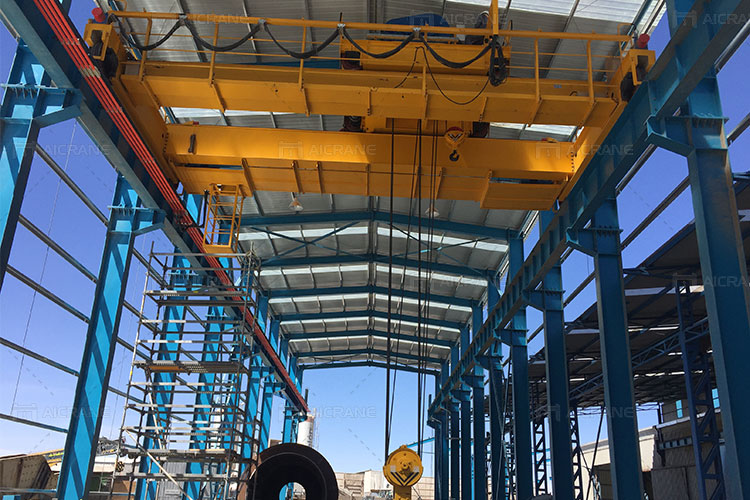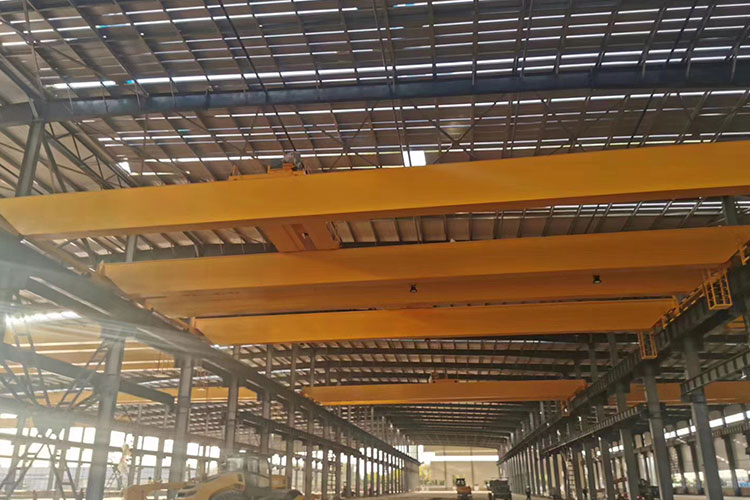Overhead cranes are integral to heavy lifting operations across a variety of industries. Among the most commonly used overhead cranes is the 50-ton crane, which offers substantial lifting capacity for handling large, heavy materials. However, when the standard crane design doesn’t meet the unique requirements of specific lifting tasks, customization becomes necessary. Customizing a 50-ton overhead crane for special lifting applications ensures optimal performance, safety, and efficiency.
In this article, we will explore why customization is often needed, the types of customizations available, and how businesses can benefit from a tailored crane solution.

Why Customization Matters for 50-Ton Overhead Cranes
The need for customized overhead cranes arises from the diverse range of industries they serve, each with its own set of challenges and requirements. The standard specifications of a 50 ton overhead crane might not suit every lifting task. For example, industries such as aerospace, steel manufacturing, construction, and power generation often require specialized lifting solutions to handle materials of varying shapes, sizes, and weights.
Some common reasons why businesses opt for custom cranes include:
- Unique Load Characteristics: Lifting materials with irregular shapes or extreme sizes that standard cranes are not designed for.
- Environmental Conditions: Cranes may need modifications to work efficiently in extreme temperatures, hazardous environments, or confined spaces.
- Space Constraints: Some facilities have limited headroom or space for crane operation, which requires a crane design tailored to fit.
- Enhanced Safety Features: Certain applications may necessitate additional safety systems, such as anti-collision systems or specialized controls for sensitive operations.
By customizing a 50-ton overhead crane, businesses can ensure that the equipment will be capable of handling their specific tasks efficiently, reducing downtime and improving operational safety.
Types of Customizations for 50-Ton Overhead Cranes
When it comes to customizing a 50-ton overhead crane, there are various options to consider, depending on the specific lifting requirements. Let’s explore some of the most common custom features:
1. Load Handling Attachments
In many applications, the load being lifted is not a simple block or container but a specialized, irregularly shaped item. For example, in the aerospace industry, manufacturers lift large, delicate components such as wing sections or turbine blades. Custom load handling attachments are necessary to ensure the proper grip, balance, and safety of these components during lifting.

Some common attachments include:
- Magnetic Lifting Devices: Used for lifting steel plates, pipes, and other ferromagnetic materials.
- Vacuum Lifters: Employed for lifting large sheets of glass, metal, or other materials that can be damaged by traditional lifting methods.
- Beam Trolleys and Spreaders: These are used to evenly distribute the weight of large, awkwardly shaped loads, ensuring a safer and more efficient lift.
Custom lifting attachments enable the custom overhead crane to handle specific materials without compromising safety or causing damage to the loads.
2. Specialized Hook Configurations
A standard hook design might not work for all applications. For instance, in industries where precise load positioning is crucial, such as in nuclear power plants or research labs, a custom hook design may be necessary.
- Dual Hooks: For lifting large, heavy loads that need to be lifted from two points, dual hooks are often used. This ensures that the load is evenly distributed, preventing any tilting or imbalance during the lift.
- Reversed Hooks: Used when lifting from unusual angles or for specialized tasks such as working in tight or constrained environments.
- Custom Hook Lengths: Sometimes, a crane hook must be customized in length to reach particular lifting points or clear obstacles in the workspace.
3. Crane Height and Span Adjustments
The height and span of an overhead bridge crane for sale are critical factors when it comes to lifting capacity and maneuverability. For certain applications, such as lifting large machinery or performing maintenance in tight spaces, a customized crane with a shorter or taller lift height might be necessary. Similarly, when there are space restrictions, a customized span might be needed to allow for more efficient movement.
- Low-Headroom Cranes: In facilities where space is limited, low-headroom designs allow for the crane to operate within tight confines while still maintaining its lifting capabilities.
- Increased Span: For businesses dealing with large-scale lifting tasks across wide spaces, extending the span allows the crane to cover a broader area and lift heavy loads more effectively.
4. Control Systems Customization
The control systems for overhead cranes are crucial for both efficiency and safety. Depending on the specific lifting tasks, businesses may require a custom control system to meet their needs.
- Remote Control Systems: Many modern cranes are equipped with wireless remote control systems, allowing operators to control the crane from a distance. This is particularly useful when lifting hazardous or sensitive loads. Custom remote control systems may feature ergonomic designs or specific functionality, such as dual control modes for different lifting conditions.
- Anti-Collision and Safety Features: In environments where multiple cranes operate in close proximity, adding anti-collision sensors to the crane’s control system can improve safety and prevent accidents. Additionally, emergency stop buttons, overload sensors, and safety alarms can be customized based on the specific application to ensure safe operations.
- Data Tracking and Monitoring Systems: For industries requiring detailed performance monitoring, customized data tracking can be incorporated into the crane’s control system. This system collects data on crane movements, load weights, operating hours, and more, allowing businesses to track crane performance and perform predictive maintenance.
5. Environmental Customizations
Certain industries, such as oil and gas, power plants, and chemical manufacturing, operate in extreme environmental conditions. Cranes used in these settings must be designed to withstand harsh temperatures, corrosive materials, and hazardous atmospheres. Custom features for these environments can include:
- Corrosion-Resistant Materials: Crane components made of corrosion-resistant materials are necessary when working in environments with high moisture or exposure to chemicals.
- Explosion-Proof Features: For use in hazardous locations where flammable gases or dust are present, explosion proof cranes are required. These cranes are designed with sealed electrical components and anti-spark features to minimize the risk of igniting the surrounding environment.
- Temperature-Resistant Components: Cranes operating in extremely cold or hot environments need components that can withstand temperature extremes without compromising the crane’s functionality.
Benefits of Customizing 50-Ton Overhead Cranes
Customizing a 50-ton overhead crane provides several advantages, particularly in terms of optimizing performance and ensuring safety. Some of the key benefits include:
- Improved Efficiency: Custom cranes are designed to meet the specific needs of the business, reducing the time required for lifting operations and improving workflow.
- Enhanced Safety: Custom safety features, such as load-sensing devices, anti-collision systems, and emergency response mechanisms, help minimize the risk of accidents during crane operation.
- Cost Savings: Although the initial investment in a customized crane may be higher, it can lead to long-term cost savings by improving operational efficiency, reducing downtime, and prolonging the crane’s lifespan.
- Greater Flexibility: Custom cranes offer businesses the flexibility to tackle a wide range of lifting tasks, even those that may have been considered impossible with a standard crane design.
Conclusion
Customizing a 50-ton overhead crane for special lifting applications is essential for businesses that need to handle heavy, oversized, or complex loads. By tailoring crane features to meet the specific needs of a business, companies can optimize their operations, improve safety, and ensure more precise lifting. Whether it’s adjusting the crane’s size, adding specialized attachments, or integrating advanced control systems, customization enables businesses to take full advantage of their crane’s lifting potential.
With the right customizations, a 50-ton overhead crane can significantly enhance productivity and safety, providing businesses with the tools they need to succeed in even the most challenging lifting operations.